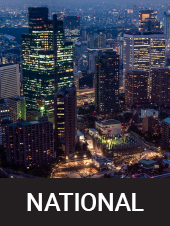Russia’s central bank raised its key interest rate by a full percentage point to 19% to combat high inflation as government spending on the military strains the economy’s capacity to produce goods and services and drives up workers’ wages.
The central bank said in a statement Friday that “growth in domestic demand is still significantly outstripping the capabilities to expand the supply of goods and services.” It held out the prospect of more rate increases to return inflation from the current 9.1% to the bank’s target of 4% in 2025.
Russia’s economy continues to show solid growth despite sanctions from countries opposed to what the Kremlin calls a “special military operation” in Ukraine. Gross domestic product benefits from high levels of government spending, including for the military, with tax coffers bolstered by oil exports.

One result of government outlays is inflation, which the central bank has tried to combat with higher rates that make it more expensive to borrow and spend on goods, in theory relieving pressure on prices. So far it has been fighting a losing battle, and economists say that at some point tight credit may slow growth.
Rising wages and a strong jobs market have helped shoppers compensate for inflation and as a result “consumer activity remains high,” the central bank said.

Get breaking National news
For news impacting Canada and around the world, sign up for breaking news alerts delivered directly to you when they happen.
The bank’s policy rate is the highest since February 2022, when the central bank raised the rates to unprecedented 20% in a desperate bid to shore up the ruble in response to crippling sanctions that came after the Kremlin sent troops into Ukraine.
Russia’s economy grew 4.4% in the second quarter, with unemployment low at 2.4%. Factories are largely running at full speed, in many cases to produce items that the military can use such as vehicles and clothing. In other cases, domestic producers are filling gaps left by imports from abroad that have been interrupted by sanctions or by foreign companies’ decisions to stop doing business in Russia.
Government revenues are supported by economic growth and by continuing exports of oil and gas with less than airtight sanctions and a $60 price cap imposed by Western governments on Russia oil. The cap is enforced by barring Western insurers and shippers from handling oil priced over the cap. But Russia has been able to evade the price cap by lining up its own fleet of tankers without Western insurance and earned some $17 billion in oil revenues in July.
© 2024 The Canadian Press





